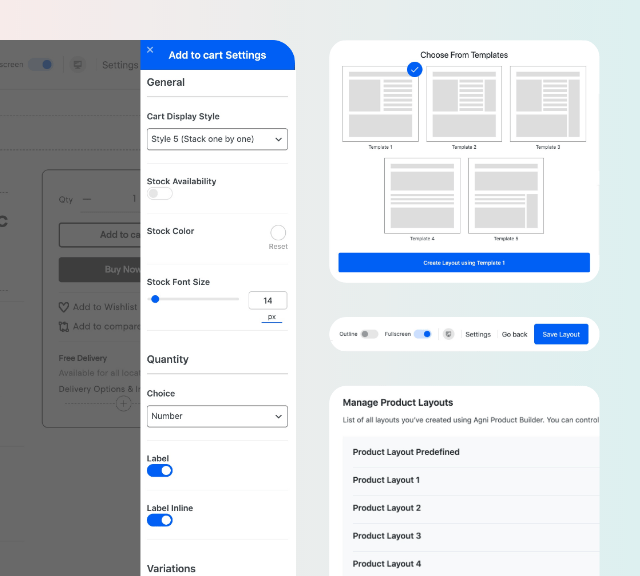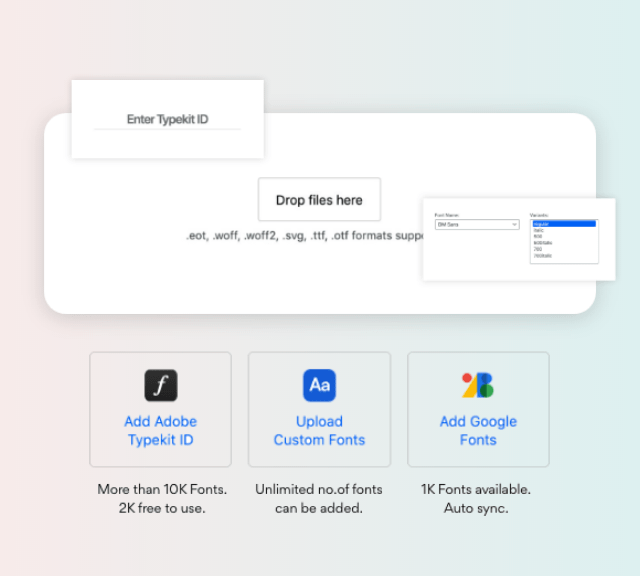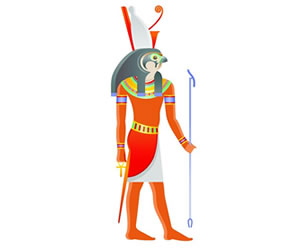Horus is the Egyptian god of the sky. He is perhaps the oldest and most recognizable of the ancient Egyptian gods. He is often portrayed as a falcon or as a human with a falcon head. With his ability to look out over the kingdom from the sky, Horus was viewed as a protector of the people of Egypt, particularly the pharaohs and rulers.
Quick Facts About Horus
- He appears in the Heliopolitan family tree as the brother of Osiris;
- Horakhty, or “Horus of the Two Horizons,” was the god of the rising and setting sun. Fused with the sun god Ra, he was also known as Ra-Horakhty and depicted as a falcon or falcon-headed man with the sun disc on his head.
- In the final battle between Horus and Set, Set turned into a hippopotamus and tried to destroy Horus’s boat. Horus managed to spear Set but was prevented from killing him by the other gods. They did however acknowledge Horus as rightful heir to the throne after the battle;
- Horus the Younger, or Horus the Child, was known as Harseisus or Herupakhered. He was depicted as a naked infant with a lock of hair on the side of his head and often with a finger to his lips;
- In many depictions of Horus as a falcon or falcon-headed man, he wears two crowns to symbolize his rule over both Upper and Lower Egypt;
- Some pharaohs identified with Horus by wearing necklaces featuring eagles with wide-swept wings;
- Set tried to prove his dominance over Horus by seducing and having sex with him. However, Horus caught Set’s semen in his hands and threw it into the river. He then spread some of his own semen on Set’s food. At a meeting of the gods to decide on Egypt’s ruler, Horus’s semen answered from within Set, proving his dominance over his uncle;
- The Great Sphinx of Giza, that is generally believed to depict the face of the Fourth Dynasty king Khafra, was called Hor-em-akhet, or “Horus of the Horizon,” in the New Kingdom.
Origins
Horus was the first known national god in Nekhen, city of the falcon and religious and political capital of Upper Egypt at the end of the Prehistoric Period. Many falcon gods existed in Egypt over the next millennia. A great number of them were assimilated to him.
The falcon god became known as Haroeris or Horus the Elder over time. In this form he was often associated with Hathor, the ancient cow-goddess, sometimes as son and sometimes as mother.
It was believed that the reigning king or pharaoh was a manifestation of Horus. Every king also had a Horus name that identified him with the god.
Appearance
Horus was most often depicted as either a falcon or a human with the head of a falcon. These depictions could be in the form of statues, engravings or paintings. Horus’s right eye symbolized the sun or morning star and was therefore associated with the sun god Ra, while his left eye symbolized the moon.
There are a number of examples of him being portrayed as a falcon, such as this statue at the Temple of Horus at Edfu. Here, the falcon is wearing a double crown called a pschent.
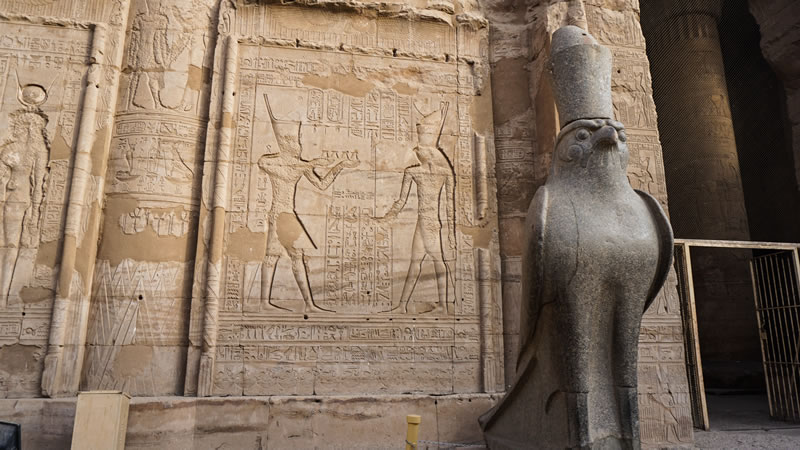
When he was portrayed as a human with a falcon head, he was often wearing clothing similar to that of the pharaohs. Sometimes he was pictured wearing the pschent. In other instances he was depicted wearing a Nemes headdress, like the one on the statue in the picture below. Horus is also often shown wearing a broad collar called a wesekh.
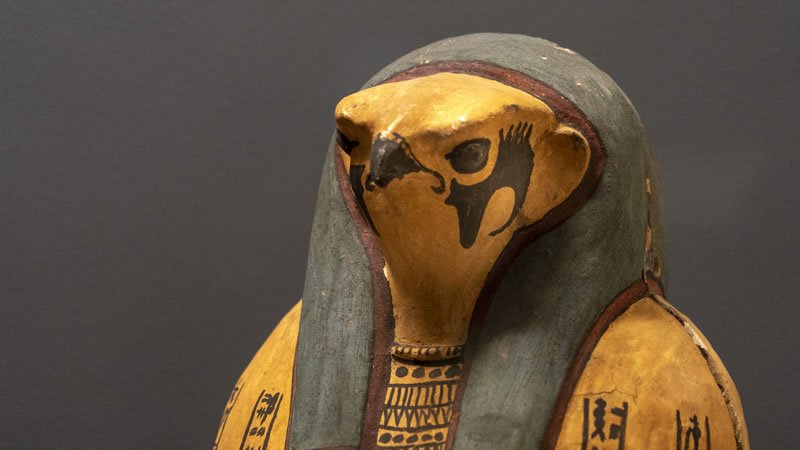
Family
The many aspects of Horus make him a complicated deity with an intricate mythology, passed on in a multitude of ancient texts such as the early Pyramid Texts. In the myth of Osiris, Horus is the son of Osiris and Isis as well as the mythical heir to Egypt’s kingship. During this time, the living king was seen as a manifestation of Horus in life and of Osiris in death.
Horus is the brother of the god Anubis.
Horus the Elder battled his uncle Set (brother of Osiris) for 80 years after Set murdered Osiris. Set wanted the Egyptian throne for himself but was eventually defeated by Horus. According to myth, Horus’ left eye was damaged in one of the battles, explaining the different phases of the moon. The eye was, however, restored by the god Thoth.
Symbols
The falcon, along with the Eye of Horus, are the two main symbols affiliated with the god.
The Eye of Horus is a symbol of protection and power, and is personified in the goddess Wadjet, another early Egyptian deity. It appeared in funerary amulets, protecting pharaohs in the afterlife. Seven such bracelets were found on the mummy of Shoshen II.
Powers & Duties
As creator and god of the sky, Horus was known as the protector of the pharaoh.
Horus was also believed to be a god of war and hunting. The prehistoric Hunters Palette or Lion Hunt Palette, an ancient Egyptian cosmetic palette showing a lion hunt, includes images of a falcon-headed man believed to be Horus.
Worship
He was worshiped over a period of approximately three thousand years, from prehistoric Egypt (before 3100 BC) until the time of the Roman Empire.
The temple of Edfu in Upper Egypt was dedicated to Horus. It is one of the best-preserved temples in Egypt today.
More Horus Facts
| Name(s): | Horus |
| Ruler of: | The Sky |
| Protector of: | Pharoah |
| Gender: | Male |
| Symbols: | Eye of Horus |
| Sacred animals: | Falcon |
| Parents: | Isis (mother) and Osiris (father) |
| Siblings: | Anubis |
| Greek Similar: | Uranus, god of the sky |
| Roman Similar: | Caelus, god of the sky |























